FALMOUTH – I moved to Falmouth 31 years ago. The first story of local history that I heard, even before I heard the story of Falmouth native Katharine Lee Bates writing the classic “America The Beautiful,” was the story of the British Warship Nimrod’s attack on Falmouth in the War of 1812. So I went to the Nimrod Restaurant. I had a beer or two. Luckily for me, I then had to use the men’s room and there was a line.
That was when I first saw the cannonball hole in the wall.
The War of 1812, right here. Wow. This was not Disney make-believe. This stuff actually happened in our America. In my new town, our town. The rockets red glare. Our Nimrod.
Well, the most famous War of 1812 cannonball hole on Cape Cod, in the now-closed Nimrod Restaurant on Dillingham Avenue in Falmouth, will be saved. So there’s that.
But the historic structure surrounding the cannonball hole appears fast-tracked for demolition by request of the new owner-to-be, Chappy LLC, owned by Warren Dalton of North Falmouth.
Just a half year before January 28, 2014, the 200th anniversary of when the British war ship Nimrod shot more than 300 cannonballs at the town of Falmouth, the Nimrod building, one of the three remaining houses that was hit that day, is slated to be torn down and replaced with a multi-use structure, for which specific plans have not yet been drawn up, said Dalton.
Dalton’s new development would be about 14,000-square feet, he said. “I would design a historically attractive project,” he said.
According to Jim Fox, the Kinlin Grover real estate agent representing both buyer and seller, Chappy LLC has a purchase-and-sales agreement to buy the property from S.A. Challenger, a company formed by US Bank of Chicago, which owns the property. The Nimrod was operating as a restaurant until late last year when it was foreclosed on.
“I got a call from a bank in Chicago asking for help with it,” said Fox. “They gave me the listing and told me they wanted to sell it as fast as possible.”
“I’m not in a rush,” said Dalton. “It’s really the seller,” meaning the bank, he said..
When asked for a contact at that bank, Fox said that no one at the bank knows anything about the property. “It’s just a piece of paper to them,” he said.
“It’s a great location,” said Dalton. “The building, unfortunately, has not been cared for.” A renovation, he said, is too expensive. “If somebody steps up, I would certainly sign away my rights.”
The Nimrod could conceivably be gone before the 200th anniversary of the attack, said Dalton, who closes on the purchase and sales agreement in August..
The demolition of the Nimrod is not completely a done deal. But it’s pretty close. And this is interesting. It is a move that was approved by a 4-1 vote of the Falmouth Historical Commission on the condition of, among other things, a public hearing on the matter be held. The hearing is scheduled for July 17.
Last month, that commission voted 4-1 in favor of a request to waive the standard six-month waiting period that is required for demolition of any building defined by the town as significant. Specifically, the bylaw partially defines significant as “The building is importantly associated with one or more historic persons or events…”
Getting hit by a cannonball in the War of 1812 qualifies as historically significant.
There is a difference between a “significant” building, whatever that is, and one of the most famous historic buildings in town.
There are only three of these British cannonball targets left in Falmouth: the Elm Arch Inn, Shoreway Acres (which was the Captain Crocker House), and the Nimrod. The original cannonball-hit house that is now part of the Nimrod building was moved twice from its original location where the cannonball hit it.
As a “significant” building, the Nimrod was subject to the standard six-month waiting period for demolition.
The request for demolition was filed in March, said Fox. The six months would be up in September without the waiver.
![]() A Jigsaw Structure And A Problem of Math
A Jigsaw Structure And A Problem of Math
“People have called me up and said, why don’t you help us save it?,” said Fox, who lives in Falmouth and is a member of the Falmouth Planning Board. “It’s because I know the math.”
The Nimrod Restaurant, described by Fox as a “mishmash of old and new” is actually two old houses that were moved and joined together to form one house on Dillingham Avenue. Two large additions were later added to create the jigsaw structure that is there now.
“The building envelope needs replacing,” said Fox, as he guided a tour of the building. He was just getting started in describing the renovation issues. “The skin of the building. It needs everything.”
“There is wood-boring insect damage. I don’t know what kind, possibly termites,” he said. “There has been neglect for 50 years. The electrical system is extremely antiquated. After it was foreclosed on, the pipes broke. It’s a summer building. There’s very little insulation on the upper floors. And the bathrooms haven’t been updated in 70 years.”
Fox presented a compelling and long list of problems with the property. The list was nothing compared to the tour, especially the basement. “It’s growing down here,” he said on the tour. It – “it” being mold – is growing in the basement of the Nimrod. “You can see your footprints,” he said. Not exactly, but his point was well taken. Mold is visible and smellable..
On the tour of the basement, he reached up and grabbed some wood from a beam. It fell apart in his hand. The basement, like many old Cape Cod basements of commercial buildings was a maze. In more than one place, there appeared to be stray random wires, and Fox pointed out what he called a very ancient electrical system. Fox was selling that the Nimrod as it exists now is in horrible shape.
I bought it. Not the Nimrod. I wish. If I could buy the Nimrod, I’d save it – somehow. Instead, I bought the story.
The Nimrod is in horrible shape.
The building has 10,000 square feet of space on three floors. There are 7,000 square feet on the ground floor that was the restaurant, plus four apartments on a second and third floor. When the building was foreclosed on, Fox said he was forced to evict renters. He said he paid two tenants $2,500 in a what he said is a common real estate procedure called “Cash For Keys.” The apartments appear to have still have traces of former tenants, including furniture and even an amplifier for music. The tenants, said Fox, were older musicians who occasionally played in the restaurant.
Tom Renshaw, a builder in Woods Hole who renovates old houses, knows the Nimrod well. “I played there (in a band) for the last eight years,” he said.
As for renovating the building, Renshaw said, “It definitely could be done. There’s nothing that can’t be fixed. What it takes is considerable money. There’s nothing there that can’t be fairly easily fixed. The real problem would be bringing the thing up to modern code.”
Fox acknowledged that the building could be renovated. And he agreed that any renovations would require bringing the building up to code. Besides the electrical, structural, and plumbing problems, there is a safety problem in that the building does not have a fire sprinkler system, he said. Renovating the building to bring it up to code could cost close to $2 million, he estimated.
![]() Demolition Delay – “We are following the town bylaw.”
Demolition Delay – “We are following the town bylaw.”
In November 2006, Falmouth Town Meeting approved the Demolition Delay bylaw which stated that “owners of significant buildings are encouraged to seek out alternatives to demolition that will preserve, rehabilitate or restore such buildings, and residents of the Town are alerted to impending demolitions of significant buildings.”
That’s part of the “Intent and purpose” of the bylaw as written.
The teeth of the bylaw, however, are dentures… that have fallen out. If the Nimrod disappears, that will be one significant reason why. That and a persnickety little American thing called private property rights.
“The town has a bylaw and we are following the bylaw,” said Fox. “It’s really spelled out, every step, and we have followed every single step. Remember, Falmouth is a town meeting town, and this is their bylaw.”
Essentially, the bylaw requires that a request for demolition of any significant building be delayed by six months. The applicant or a representative must meet with the Historical Commission for an “advisory review.”
That’s it.
An advisory review must be attended, but then all advice can be legally ignored. All an applicant really has to do, besides meeting with the Historical Commission, is wait the six months, and then the demolition can proceed. The Historical Commission has no real power.
That’s where the application for the waiver of the six-month waiting period comes in.
“We don’t have any teeth,” said Heidi Walz, chairman of the Historical Commission. “The only teeth we have is when we get a request for a waiver because then we can put conditions on it.”
There were three conditions put on the request. The colonial house will be listed on the Cape Cod Commission website for anyone who may want to buy it and move it. There will be a photographic archive made of the building. And there will be a public hearing on July 17 for the town to come forward one final time.
Historical Committee member Nancy Hayward, who cast the one vote against granting the waiver of the six month delay, said the only hope of the public hearing is “to see if an angel steps forth to finance some appropriate use of the building.”
![]() Demolishing History Is Profitable, Or Is It?
Demolishing History Is Profitable, Or Is It?
After the Nimrod restaurant was foreclosed on, Fox was contacted by the bank in Chicago to be the agent for the property and to sell it fast. He showed it to 20 prospective buyers, he said, and each one said the building could not be saved in any way that is profitable.
People from Falmouth interested in the history of the Nimrod also called, said Fox. “I said fine, go get the money.”
There it is.
Money. It’s always about money. It should come as no surprise that cash is king in a game called real estate. But something feels wrong about how fast this is happening, or that it is even happening at all. But that’s math.
“The hell with math,” said Anne Macaulay, who posted a general request to help save the building on the Facebook Group “If you grew up in Falmouth, MA., you remember…” Macaulay plans to attend the July 17 hearing and voice her opposition to the waiver of the demolition delay, and her opposition to the demolition.
“This will be the Nimrod battle number two, the sequel,” she said. “There is interest in the townspeople to save that building,” she said.
Fox acknowledged as much. “Everyone in town wants to save the Nimrod,” he said. “My first job, as a busboy, was there. I had my wedding there.”
Dalton said he was interested in hearing what people will have to say at the July 17 meeting. “I always listen,” he said. “But talk is cheap. Who is going to step up and renovate it?”
Fox pointed out that the building is private property and the owner has the right to demolish it. More importantly, he said, no one has stepped forward to save it and all who have seen it have said it is not cost effective to save it. Just bringing the structure up to modern code would be an enormous expense, he said.
Although there is no specific plan for the property, Fox said zoning “allows mixed use. You can put residential and retail and office space there.” The residential could be condominiums or apartments, he said.
Dalton’s company, Chappy LLC, has two developments in West Falmouth – Westwind Cottages and Fieldstone Place. They are high end, very nice. What would be built on the site of the Nimrod would most likely also be high end and very nice.
Of course, high end and very nice can be found increasingly all over the Cape while the Nimrod has a house that was attacked during the War of 1812. Much rarer, and one would think, more valuable.
“There goes our history,” said Macaulay.
And Hayward said, “Historic preservation is economically advantageous for the community. It attracts visitors to the community, That’s part of the reason people like Falmouth. It has a history. It adds up to an ambiance that does not always add up in dollars and cents.”
![]() Cannonball Versus Wrecking Ball
Cannonball Versus Wrecking Ball
Leslie McDonald, a former member of the Historical Commission, asked the most obvious question: “Why are people buying historic treasures and then want to eliminate them?”
Fox argued, “The lore is mixed up. The story is great, but the building that was hit by the cannonball was down by Surf Drive Beach. It’s been moved twice.”
Still, as he said, the story is great.
In the spring 2013 “Mainsheet,” the news-letter of the Woods Hole Historical Museum, Susan Fletcher Witzell wrote a compelling two-page historic essay about the day the ship Nimrod attacked Falmouth. “The bombardment began at 1 p.m. January 28, 1814,” she wrote. “Over 300 cannonballs were shot at the town… Sea Captain John Crocker, whose large white house was prominently visible up the street from the dock area, had his home severely damaged; the British thought it was the governor’s house. Other captain’s houses and various large dwellings along Main Street all the way to the village green were hit by the balls, causing much damage.”

One of the best places to contemplate history in Falmouth. That’s the cannonball hole to the left of the stall..
The part of the Nimrod restaurant that was hit by the cannonball was not a grand house. “It’s a crude, basic, real history of people who toughed it out here every winter,” said McDonald. “They raised animals, dug shellfish and caught fish.” The Nimrod, she said, was a “visual representation of the town’s history and accessible to all. It was not a secret. We had that reminder of a time in our history when the people in this town were under attack by 300 cannonballs.”
And the cannonball hole itself? Well, “It’s really a hole in the men’s room wall,” said Fox. “I saw it the first time when I was 15 and I never cared about it since.”
In a way, Fox is correct. The cannonball hole is not all that impressive to see. The impressive part was to see it and then contemplate about the day it happened. In the old Nimrod restaurant, unfortunately, the best chance for historic contemplation was if you were in line for the urinal.
“The only historical aspect is the hole in the men’s room wall,” said Walz.
While the Nimrod restaurant, including both colonial houses, may be demolished, Fox said, “I have a bunch of people who want the cannonball hole.” Instead, the cannonball hole will be saved and incorporated in some way into the new development, he said.
So there’s that.
There’s also this. “We are the town that hatched Katharine Lee Bates, who wrote ‘America The Beautiful,’ ” said Macaulay. “Why are we mowing down our history?”
![]() What’s The Rush? A Bylaw Without Teeth
What’s The Rush? A Bylaw Without Teeth
The Demolition Delay bylaw states that an owner has the legal right after waiting six months to tear down a historic building. Dalton, through Fox, has been working with the town to meet the conditions set by the Historical Commission in order to speed the process.
It appears that granting the waiver gives the town its only leverage, or at least, that’s the argument. And the weird part is, leverage means hurrying the process up.
“This is our way of working with the private sector,” said Walz. “Not granting the waiver doesn’t have any teeth. If we don’t grant the waiver, we can’t put any conditions on it.” The Historical Commission, said Walz, “works to preserve the historical character of the town. That is our mission but we are sort of handcuffed by the weak bylaw.”
It’s true. Without a specific “War of 1812 Cannonball Clause,” in other words, you can’t tear down a house with a War of 1812 cannonball hole in it, it’s a stupid bylaw.
Still, even without that most logical clause, what’s the rush?
“We cannot prevent a historic building from being torn down,” said Hayward, the lone dissenter to granting the waiver. “We can only delay it.”
But Walz said, “We have to balance. A lot of times people get up in arms because they think we are infringing on their property rights.” Walz suggested the town needs a preservation trust that raises money specifically to preserve old buildings in much the same way that the 300 Committee has successfully purchased and preserved open space.
She suggested that people coming in “three seconds before the bell rings should put your money where your mouth is.”
In fact, it is three months before the bell was supposed to ring. That is, until the Historical Commission granted their waiver.
Fox said the property can be bought, if Dalton would agree, for $699,999.
“The seller definitely wants to sell the building,” said Dalton, referring to the bank.
“The only way I make any money,” said Fox, “is doing what my clients want, and I’m doing the best that I can.”
This is such a modern American story.
Essentially, a large out-of-town bank pressured a local real estate agent to quickly sell a historic foreclosed property. The only prospective buyers the agent could find on short notice didn’t have the means to renovate this piece of history. So it went to the highest bidder, and the town is handicapped by its own weak bylaw. Case closed. Or is it?
History is a socialist. It belongs to all of us, but it looks like it needs a capitalist to save it.
“If somebody stepped up and said they wanted to save it, I would certainly step aside for it,” said Dalton. He also said he would be willing to let someone move this historic part of the Nimrod to another location.
Fox said it would probably cost about $50,000 to move the part of the Nimrod that was hit by the cannonball, if a location could be found. “If someone wants to move the building for a third time,” he said, “they’re welcome to it.”
Please like us on Facebook
For more stories like this, please see Longform stories
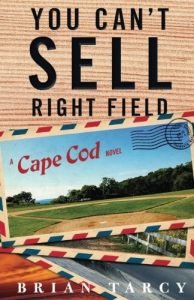 A Cape Cod land deal, a softball team and an election.
A Cape Cod land deal, a softball team and an election.
From Cape Cod Wave: YOU CAN’T SELL RIGHT FIELD, A Cape Cod Novel

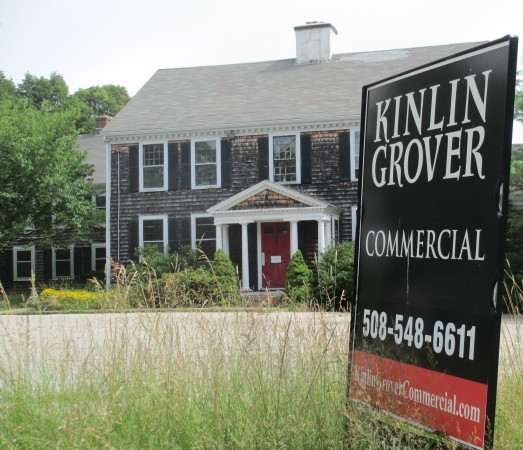
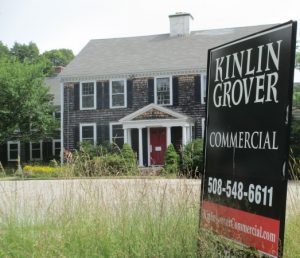



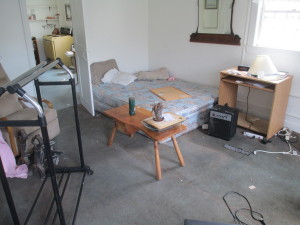

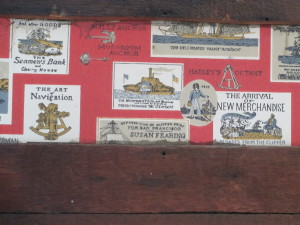
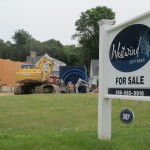
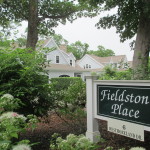
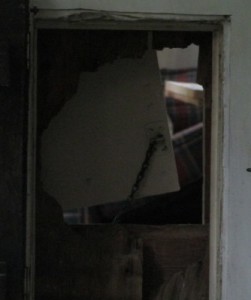
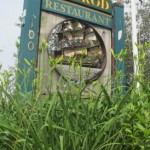




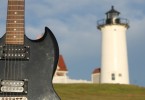








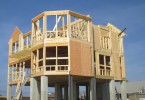










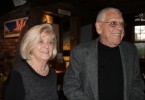
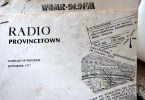




I beg everyone’s pardon for my unfortunate choice of words. But the feeling is there. It would be a crime to tear down this building. The Nimrod is a symbol of the tyranny fought –and won— by our widely outspent, underarmed American ancestors. To have it come to this: to destroy a structure for a) the expediency of a bank’s balance sheet, b) a real estate agent’s commission(s), and c) a developer’s bottom line; then to allow that developer to “reinterpret” American history in the form of still another upmarket, architectural Mc-Development would be a crime. We have no right to erase any and all vestiges of that which is not ours to erase —our hard-fought history– in the first place. We are cowards if we let it happen.
Why waste money and time to save a building that is, at this point only a symbol of what happened. It has been moved from the original location, patched and added on to without period-accurate materials. Wouldn’t it be better to just preserve the 4′ by 6′ section of the wall where the cannon ball was, salvage any small significant artifacts that may be of interest and build a display like the ones put up in the Village Green at Christmas. It could have glass sides to see both sides of the wall. A written history of the event could be added as well as photographs and artifacts.
If placed in the park in town or at the Historical Society, more people could see it. It would be more cost effective, and it would be easy to maintain. It would be nice to have a few of these little displays positioned throughout Main St. area for everyone walking by to enjoy.
I am sorry to hear about The Nimrod’s foreclosure. A sad fate for an building where I lived from 2003 – ’04, on my journey as a wandering singer/songwriter. It was a funky Cape Cod house with alot of character – and characters. A sad sign of these bad economic times when corporate greed seems to be winning the war between individuals and the money-hoarders. There are too many foreclosures, too many banks staying obscenely wealthy, and too many hard-working families and individuals being unable to keep up with the ever-rising cost of living.
I have memories of this place, not all of them happy, but my stay at The Nimrod was an important year in my life.
God Bless Jim, Gwynn and family, Tim, Joe and all the rest of the folks of The Nimrod.
I first entered The Nimrod on the arm of a dashing young naval officer who had attended prep school in Baltimore with one of the new owners, Mac Grant, younger partner of the older (and wiser) George Allen. it was 1957 and I had just turned 22. I felt as if I had entered a place totally apart from all I knew in then stuffy old Boston. Charm oozed from the candles on each cocktail table lovingly tended by George to the Great American Songbook selection played on and sung BT Down Carey at the baby grand piano. The ambiance was incredible, as were the drinks and dinners. Over the next ten years I returned again and again – and never losing that feeling of happiness as I walked down the boxwood lined pathway to the entrance. To this very day those warm candlelit music filled nights at the Nimrod warm the nights of my lonlier less happy eighties. What a metaphor….
Correction to my comment ….sung by Don Carey…